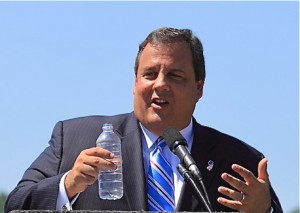Drowning Your Future In The Bath Tub
- “I don’t want to abolish government. I simply want to reduce it to the size where I can drag it into the bathroom and drown it in the bathtub.” Grover Norquist, Republican Guru (5/25/01)
- “This governor [Christie] has said no new taxes and no unfunded mandates” – DEP, 4/9/13
 For over a decade, the Republican Party has been driven by Grover Norquist’s desire to shrink government, and zealously have pursued a slash and burn agenda of tax cuts, deregulation, downsizing, and privatization to achieve that objective.
For over a decade, the Republican Party has been driven by Grover Norquist’s desire to shrink government, and zealously have pursued a slash and burn agenda of tax cuts, deregulation, downsizing, and privatization to achieve that objective.
But now, not satisfied with simply drowning government in the bathtub, they are coming after the infrastructures that literally make your life – and your family’s future – possible.
Schools, libraries, roads, trains, buses, water, sewer, parks, hospitals, energy systems – the infrastructure that makes you life possible – are being run into the ground. Just at DEP:
New Jersey needs to spend $45 billion over the next two decades to repair its drinking water infrastructure and sewage treatment plants, according to Michele Siekerka, an assistant commissioner for the DEP in water resource management. That means investing $8 billion in its drinking water infrastructure and another $37 billion in wastewater treatment.
My goodness, in Hillsborough (Somerset County), one of the wealthiest towns in the State, the Star Ledger reports today that they are fighting over library fee revenues! How low can it go?
The necessary funding to maintain and upgrade them is being blocked by political ideology.
We are engaged in a race to the bottom.
Since the day NJ Governor Chris Christie was sworn into Office, we’ve been writing about the implications of his radical and ideological views of government and the public policies that flow from them (all of which were fleshed out in his DEP Transition Report).
In the first hour of his first day in Office, the Governor’s first official act was to issue a series of sweeping Executive Orders (#1 – 4) expressing and operationalizing those radical views.
Those radical policies have consequences – examples:
- because DEP was blocked under Executive Order #4 from imposing “unfunded mandates”, highly vulnerable shore towns and water and sewer infrastructure were left unprepared for the power outages and flooding we experienced under Sandy;
- as a result of the “cost benefit” requirements of Executive Order #2, we are killing the renewable energy industry;
- “No new taxes” means that the Transportation Trust and the Green Acres Garden State Preservation Trust can not be renewed
Now, almost 4 years later, we are finally seeing the effects and the media is beginning to wake up and connect the dots between government policy and on the ground conditions.
In many ways, Superstorm Sandy has forced that awakening, but more mundane matters, like the recent multiple water main breaks across the state – in Hoboken, six in one week! – certainly reinforce the message.
When these critical infrastructure investments are not made, we kill jobs; forego economic development opportunities; allow erosion of public health, ecological integrity and quality of life; and put your family’s future further at risk.
Is this the future you want?
don’t know your take on this but wanted to let you know audobon and njdfgw are planning to log many acres at Weldon brook wildlife management area. they want scrub/shrub grassland and have offered to information to bolster their claim that nj doesn’t have enough. same division thought they could sell logs from their logging at Sparta mt but with the sandy blowdown logs have little value. bats will be negatively affected. deer will love this and I don’t thnk its good to create lands for them to proliferate. I also don’t like creation of heat islands, the flooding problems, and I think trees help us so I want to save them. don’t know your take on this.
Thank you for shedding some light on one of the real reasons for NJ’s infrastructure problem. I work in the environmental field, and too often the blame for the crumbling infrastructure is placed on the operators of the water and sewer systems. Most of these folks want to repair/replace/upgrade their systems, but it takes a lot of money – money that the “owners” (municipalities, rate payers, etc) are not willing to spend. Unfortunately, much of the problem with these systems is that they are underground and therefore “out of sight & out of mind.” If people had the ability to “see” the problems that are going to happen if repairs and/or replacements are not made, they would not have to wait until a water main breaks, or a sewer line collapses – at which point people point their fingers at the operator for failing to maintain the system. People are quick to point out a failing bridge or a road full of potholes because they are visible, but the pipes that carry water and sewer (that protect their health and our environment) are unseen, and therefore these reports about the amount of $$ needed to repair these unseen systems is easliy dismissed. NJ should take the lead in fixing its infrastructure – thus getting more people back to work, and protecting our health & environment with clean water. I say should b/c i don’t think there is the leadership inplace to do it. And that’s a shame.